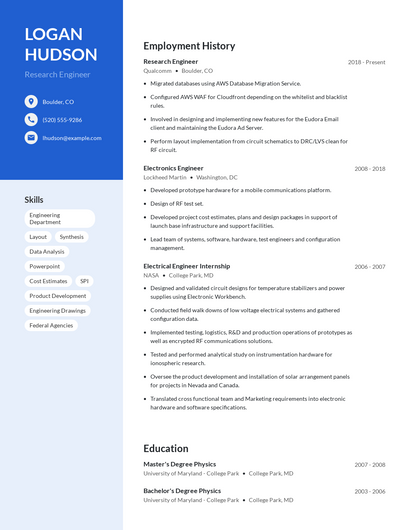
You can be a professor, medical consultant, biomedical engineer or research scientist depending on your education. Biomedical engineering tends to be more lucrative than other occupations. After 10 years, however, biomedical engineering generally earns the same salary. These are just a few of the things to keep in mind before you start this career. Consider your potential salary.
GS-6
The average salary for a GS-6 biomedical engineer is $64,288 per annum. The average federal tax rate for this occupation was 24% in 2018, while North Carolina added 5.5%. This would lead to a total annual take-home earnings of $68,400. This would mean that each paycheck would have a value of approximately $2,850. These numbers do not include metro-specific taxes.
GS-7
A Biomedical Engineer in the federal government can expect to earn up to GS-7. Your job rating and previous experience will determine your pay range. You may earn more if the city you work is Atlanta, GA. Atlanta is a city where you can expect to be paid as much as $61,085 in a single year. But, this is only an estimate of your actual salary. You should check your qualifications before applying.

GS-8
A biomedical engineer earning $93,000 per year is the average GS-8 salary. This is a good salary that is considerably higher than the GS-6. This position requires a Bachelor's degree in biomedical engineering, a CCE certification, and two years of progressively higher level graduate education. KSAs are required to be qualified for a GS-9 post. These include knowledge of the biomedical engineer profession, interpretation and making recommendations. Additionally, a Biomedical engineer must be able understand the operational requirements of the healthcare system and make ethical and practical recommendations.
GS-9
If you're interested in a career as a Biomedical Engineer, then you're in the right place. The average salary for this position is $89,000 per annum. There are many salaries, some of which can exceed $150,000 annually. It is important to remember that salary ranges depend on your level of experience as well as where you live. Below are some cities where you can earn more as a Biomedical Engineer.
GS-12
An average salary for a GS-12 biomedical engineer is $56,345 per annum. The full performance level for this job is GS-12. However it may be lower/higher depending on experience. Biomedical experts work for the federal governments. The average pay they receive is dependent upon their job category and experience. These are the main factors that impact the salary of biomedical engineer.
GS-13
A biomedical engineer makes an average of GS-13 per year. In the government, biomedical engineers are employed under the General Schedule (GS) payscale. The minimum paygrade is GS-6 and the highest is GS-15. However, the starting and maximum annual salaries are just base salaries. The actual pay will be determined by Locality Pay Adjustment (LPA).

GS-14
A GS-14 average biomedical engineer salary is dependent on the job description and experience. This job requires you to make many decisions and manage multiple responsibilities. An average biomedical engineer earns between $56,000-130,000 per annum. They often oversee a team of engineers and other staff members. The biomedical engineering field is expected to grow by 23 percent over the next decade, primarily because of advances in technology.
GS-15
GS-15 represents the government job pay scale for biomedical engineer jobs. This ranges in pay from GS-6 to GS-15. The base salary does not include Locality Payment Adjustment (LPA), and bonuses. There may be higher earnings for biomedical engineering professionals in certain states than in other states. The salaries for the same job are almost identical. While the salaries of Biomedical Engineers can differ by state, it is worth checking the pay range for your area before applying.
GS-16
The average GS-16 salary for biomedical engineers is between $107,000 to $146,800. While this is a good wage, it's not the best. Pay can also be affected by the employee's experience and location. There are some benefits biomedical engineers may be able to enjoy such as retirement plans and health insurance. These are just a few of the many benefits that this job title offers.
FAQ
Do I need a degree to become an engineer?
Engineers do not need a bachelor's degree. Many employers prefer applicants who have degrees. You can also take classes online if you don't already have a degree.
What Does an Aerospace Engineer Do?
Aerospace engineers use their knowledge of aeronautics and propulsion to design spacecraft, satellites and rockets.
An aerospace engineer could design new aircraft types and fuel sources or create space suits.
What is the Most Hardest Engineering Major?
Computer science is the most difficult engineering degree because you must learn everything from scratch. It is also important to be creative.
You will need to understand programming languages like C++, Java, Python, JavaScript, PHP, HTML, CSS, SQL, XML, and many others.
Also, you will need to understand the workings of computers. You will need to be able to comprehend hardware, software architectures, operating systems and networking.
Computer Science is a great option if you are interested in becoming an engineer.
Statistics
- 2021 median salary:$95,300 Typical required education: Bachelor's degree in mechanical engineering Job growth outlook through 2030: 7% Mechanical engineers design, build and develop mechanical and thermal sensing devices, such as engines, tools, and machines. (snhu.edu)
- Typically required education: Bachelor's degree in aeronautical engineering Job growth outlook through 2030: 8% Aerospace engineers specialize in designing spacecraft, aircraft, satellites, and missiles. (snhu.edu)
External Links
How To
How to read engineering drawings
Engineering drawings provide a visual description of an object. They contain many elements such as dimensions, symbols, text, etc. Engineering drawings have been around from ancient times. The first known drawing was made in Egypt during 3000 BC. These drawings are used by engineers to create objects such as bridges, buildings, and machines.
Engineers use engineering drawings to describe what something looks and feels like. This helps others to understand what you are talking about. Engineers make things by using symbols and numbers to measure. This makes engineering easier for those who don't have any knowledge.
There are two main types of engineering drawings: 2D and 3D.
2D drawings are flat representations of three-dimensional objects. These include plans, sections, elevation views, and axonometric projections.
3D drawings depict real-life objects from many angles. They are typically created using computer software. For example, if you wanted to see what a bridge looked like from above, you could put the model into a program called SketchUp. Select "View" and then "Top View." Next, rotate your view so that you can see everything from the top.
2D drawings are best viewed as a whole. Focus on the whole picture, not just one section. You should also pay attention to the important things in the top right corner.